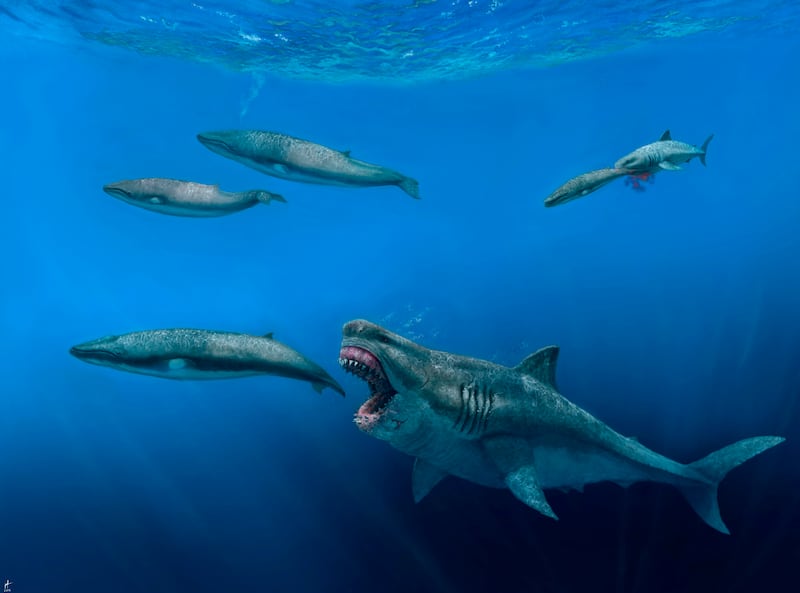A new study revealed how much more terrifying it likely was to swim in the ocean in ancient times.
Enormous sharks, called megalodons, roamed the seas and could consume an animal the size of an orca whale in five bites, according to the new research, which was published in the Science Advances journal. Orca whales scale around 26 feet long and weigh over 8,000 pounds.
Scientists compiled evidence from ancient fossils to render a 3D model of the megalodon, which was 50 feet long — three times the size of a modern great white shark, per The Guardian.
Not only was the shark gigantic, it was also fast and could have “migrated across multiple oceans with ease,” according to The Guardian.
“We estimate that an adult O. megalodon could cruise at faster absolute speeds than any shark species today and fully consume prey the size of modern apex predators,” the researchers wrote, per CNN.
According to CNN, the megalodon would have required 98,175 calories per day to survive.
Researchers have struggled in the past to get an accurate picture of megalodons, because their skeletons are composed mainly of cartilage, so often the only remnants from the beasts are their teeth.
What made the 3D model possible was a fossil that was originally discovered in the 1860s near Belgium, which had a large portion of the vertebral column that was preserved, per Science Daily.
This allowed scientists to more accurately predict the weight and size of the ancient creature.
“Weight is one of the most important traits of any animal. For extinct animals we can estimate the body mass with modern 3D digital modeling methods and then establish the relationship between mass and other biological properties such as speed and energy usage,” co-author John Hutchinson, professor at the Royal Veterinary College in the U.K., told Science Daily.


